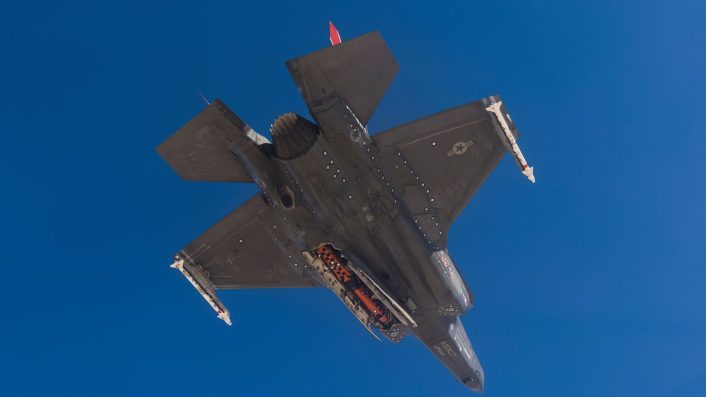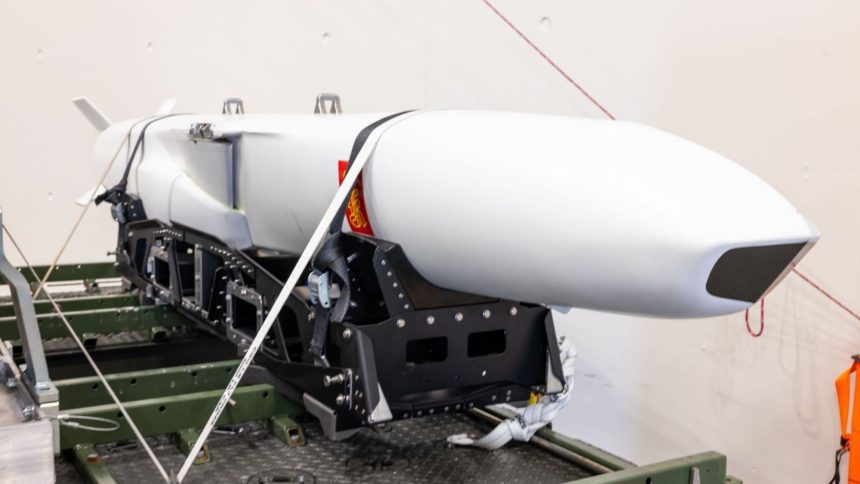The JSM is the only weapon in its class that can be carried internally by the F-35.
The Norwegian Armed Forces will celebrate on Apr. 28, 2025, the completion of the program of record for 52 F-35A Lightning II stealth fighters, while also receiving their first Joint Strike Missiles (JSM). The JSM will be the primary long-range air-to-surface weapon for the fleet of the Scandinavian country, and is also set to be acquired by the United States, Australia and Japan.
In a statement, Oslo’s Forsvarsmateriell noted how the JSM, developed by Kongsberg Defence and Aerospace (KDA) is the only air-to-ground weapon in its class that can be carried internally by the F-35. In fact, similar weapons which are currently being integrated, such as JASSM and LRASM, can only be carried externally.
The statement also mentioned the order book with KDA was “deliberately placed at the end of the project to ensure the new aircraft were equipped with the most modern weapons possible that would benefit from the F-35 upgrades already underway.” The number of JSM units acquired, however, has not been mentioned.
A Norwegian F-35 “will remain in the United States for a period of time to conduct testing with the JSM,” further added the Forsvarsmateriell. This will allow to work towards “the completion of new software in the aircraft that is necessary to utilize all the capabilities contained in the first major F-35 upgrade.” The upgrade mentioned is the Block 4 which is currently being delivered.
The U.S. announced on May. 31, 2024, acquiring the JSM in a $141 million sole source acquisition contract with KDA, to be concluded by Aug. 31, 2026. The JSM was first successfully put through a number of drop tests as a test article from an F-35A in Feb. 2021 near Edwards AFB, California. Cameras inside the weapons bay and on the wing closely monitored the separation, together with instrumentation inside the F-35 monitoring the jet’s performance.
F-35A + Joint Strike Missile (JSM) = Maritime dominance for #Norway and #Japan 😉 The long-range JSM, is the only 5th-generation cruise missile designed to be launched from the internal weapons bay of an F-35. It was successfully tested last February. #avgeeks #aviation #news pic.twitter.com/VN3zzfVOv3
— Air Power (@RealAirPower1) December 16, 2022
The Joint Strike Missile
The JSM is the air-launched version of Kongsberh’s Naval Strike Missile (NSM). The weapon is capable of flying at high-subsonic speeds, with a weight of 416 kg, a length of 4 meters and a range in excess of 350 km (189 nautical miles).
As mentioned earlier, the F-35 cannot carry large missiles like the AGM-158C LRASM (Long-Range Anti-Ship Missile) and the AGM-158A JASSM (Joint Air-to-Surface Standoff Missile) inside its weapons bay. Carrying them on the external hardpoints would compromise stealth, and this would contrast with operational requirements in some scenarios, such as the opening phases of a war against a peer adversary.
The JSM is well suited for the predominantly maritime theater of the western Pacific before China, requiring airborne anti-land and anti-shipping strikes against PLAN (People’s Liberation Army Navy) vessels and island bases in the SCS (South China Sea). An image from Kongsberg showed a single unit easily fitting inside the weapons bay of an F-35A, with each aircraft being able to carry two JSMs and two AIM-120s internally.
Kongsberg already mentioned in 2018 the integration would be part of the Block 4 upgrade. This upgrade is enabled by the TR 3 (Technology Refresh 3) program, which allows greater sensor fusion, data processing, target acquisition and tracking, and weapons capabilities, although it had been reported to be encountering a series of issues.

This upgrade is the one that Forsvarsmateriell mentioned, saying it wanted to benefit from it by aligning the completion of the F-35s’ delivery and the JSM program. In fact, the JSM itself was developed as a part of the original JSF (Joint Strike Fighter) program, and intended since the beginning to be integrated as an internally carried long-range weapon.
“JSM has an off-board, on-board and in-flight mission planning capability and can engage targets based on a predefined set of Rules-of-Engagement,” mentioned an earlier statement from KDA. This allows the missile to be fed with target coordinates on the ground, prior to launch, sparing the pilot of the complicated target acquisition process and allowing to focus on more urgent tasks.
“The selection of JSMs by both the USAF and Royal Norwegian Air Force also fully supports NATO’s vision for interchangeability of equipment between allied nations,” said Eirik Lie, KDA’s president.
Strategic and tactical implications
Brigadier Jarle Nergård, Head of Defence Materiel Air Capabilities, said the combination of the F-35 and the JSM “gives Norway the ability to find and defeat well-defended targets at a considerable distance with high precision and low risk of detection.”
The Norwegian prime minister Jonas Gahr Støre checks out the Joint Strike Missile (JSM) for the F-35A, and AIM-120 AMRAAM at Ørland 📸 OAV/Forsvaret pic.twitter.com/5qJy6bJY6q
— Selshevneren (@selshevneren) April 11, 2024
“An adversary must take into account that Norway can strike targets such as naval vessels, radars and command centers at great distances, without help from our allies,” Nergård said in the statement. The JSM can “maneuver through modern air defenses and find its target even in challenging conditions.”
Øyvind Kolset, head of the missile and space division at Kongsberg Defence & Aerospace, said they are “proud of the result and that we have contributed to the F-35 with JSM providing Norway with increased security against threats in the future.” Receiving the JSM now enables Norway to “build up inventory in parallel with the aircraft receiving the necessary software,” laying “the foundation for a rapid transition to operational use,” Nergård added.
Emphasizing the JSM’s importance to Norway’s defense strategy, Nergård pointed towards the impact on large surface vessels. “It simply will not be possible to sail where there are F-35s with JSM,” Nergård said. This also implies a sort of sea denial tactic, evolving into NATO’s own version of an A2/AD (Anti-Access/Area-Denial) strategy.
Regarding the RNoAF’s F-35As in particular, the press release also touched upon Oslo’s acquisition of the AIM-120D AMRAAM, to keep its F-35s lethal and relevant. In fact, in 2022, Norway was granted a Foreign Military Sale for more than 200 AIM-120Ds to be used as the primary air-to-air weapon.

The press release added that KDA, while contracting “around a hundred other Norwegian companies” to “supply various components […] of the missile system.” This allows “creating and securing a number of jobs in Norway,” but the company is also expanding its production capacity with factories in Australia and the USA.
“We have started the construction process and the factories will be fully operational by 2028. This will ensure that we are able to meet demand for both the JSM and its sister missile, the NSM,” the statement said.









